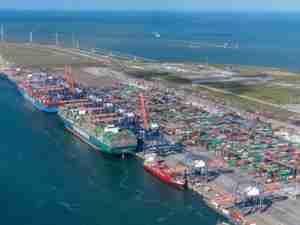In the fiscal year that ended June 30, the SCSPA’s operating revenues increased 7.6% to $165 million, operating expenses rose 6.6% to $110 million, and earnings increased 9.7% to $54.7 million.
“From a financial standpoint, South Carolina’s public port system is very healthy,” said David J. Posek, the SCSPA’s board chairman. “These strong numbers allow us to cover the costs of current operations along with the new container terminal in North Charleston. That is good news for both our customers and the people of South Carolina.”
Unlike most public seaports, the SCSPA funds all of its ongoing operating expenses and capital improvement projects, has no taxing authority and does not receive direct subsidy from the state. Since 1985, it has reinvested more than $720 million in cash to acquire and construct capital assets in the state’s seaport facilities of Charleston and Georgetown.
Further, Posek said that the SCSPA’s current fiscal position will enable it to cover the remaining state matching funds for the recently completed harbor deepening project, as well as any shortfall in funding for the Port Access Road serving the new Navy Base Terminal.
“The Ports Authority won’t need additional taxpayer funding from the General Assembly for either the Port Access Road or the new Navy Base Terminal,” said Posek.
Approximately $7.9 million in state matching funds are required to close out the Charleston Harbor Deepening and Widening Project. This work was completed in 2004, taking the inner harbor channels to -45 feet at mean low water and the entrance channel to -47 feet.
Posek said the SCSPA will cover the deepening balance, along with any additional funds that might be necessary to complete a 1.5-mile road connecting I-26 to the 280-acre container terminal that is currently under construction. State and federal dollars already allocated to the Port Access Road total more than $182.5 million, plus approximately $7 million in interest.
“The S.C. General Assembly and Gov. Mark Sanford stepped up significantly with early funding for the Port Access Road and the previous harbor deepening,” said Posek. “We are extremely grateful for their action, which is the springboard to complete these projects.”
Posek continued, “Construction of the new Navy Base Terminal is essential. It will continue to generate quality jobs for the local economy and will serve South Carolina industries as trade expands.”
Work on the new Navy Base Terminal is well underway. The $550-million Phase I is scheduled for completion in 2014 and, at build-out, the new terminal will boost Charleston’s container capacity by 1.4 million TEU (20-foot equivalent units).
The Port of Charleston’s productivity remained at world-class levels for the year. Vessel production, which measures how quickly ships are worked at the dock, averaged 40.5 moves per crane per hour for the year, the best in the country. Truck turn times are averaging around 23 minutes.
In other results, the SCSPA’s breakbulk cargo volume in Charleston rose 23% to 660,096 tons. Cruise business also increased, with passenger counts rising 35% to 131,124 and the ship count up 29% to 54 vessels. During the same period, container volume totaled 1,694,504 TEU, a 10% decline from the previous year’s total of 1,883,651 in the face of a weaker import market and stiff competition from subsidized ports along the East Coast.
“We’re obviously not content with the decline in container volume,” said Posek. “Charleston is not immune to current market conditions, but we’ll be doing all we can to increase business as the economy improves.”










